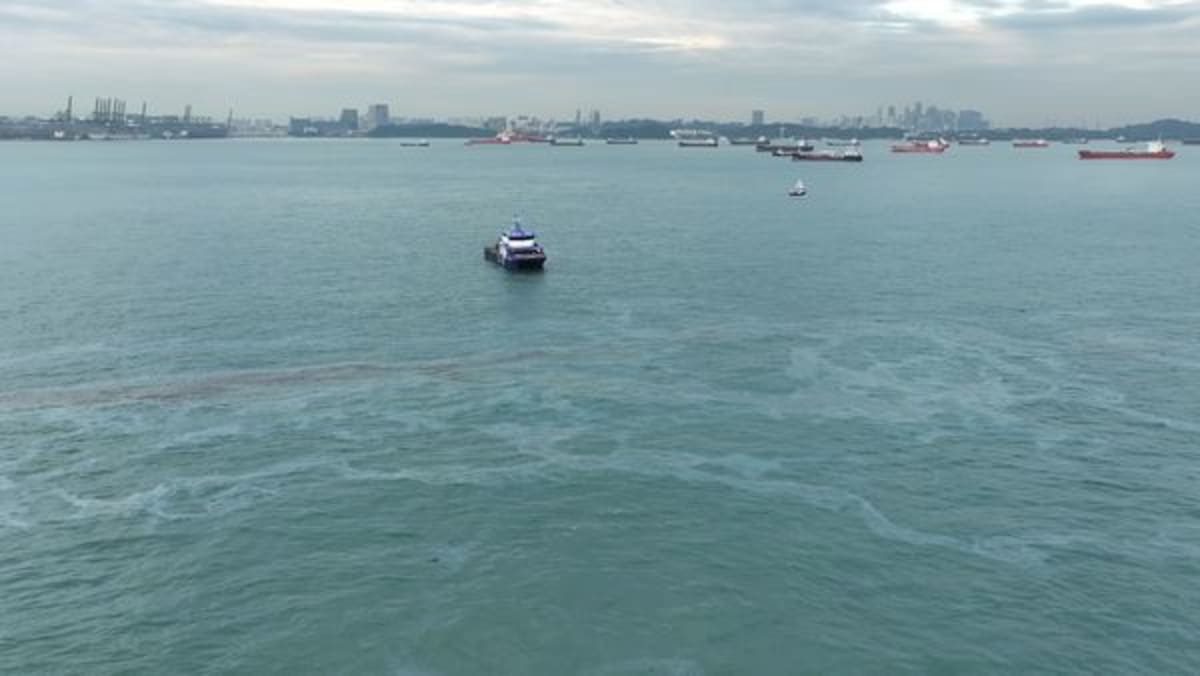INVESTIGATIONS INTO OCT 20 INCIDENT
For the oil leak on Oct 20, Shell activated resources to clean up the leaked slop in the channel between Pulau Bukom and Pulau Bukom Kechil, with operations completed nine days later, Mr Murali said.
Agencies have stood down seaward oil response assets and the booms that were earlier deployed as no other oil sightings at sea and ashore have arisen from these incidents, he added.
Responding to MP Dennis Tan’s (WP-Hougang) query on the timeline for the discovery of the oil leak, Mr Murali said that the leak in Shell’s pipeline reportedly occurred at around 5.30am on Oct 20.
Shell alerted MPA at around 1pm. MPA then alerted NEA shortly after.
Mr Murali said that NEA and MPA are investigating the incident, including the time taken before Shell notified the agencies.
“According to the rules, Shell is supposed to inform MPA and NEA as soon as possible when they detected the leak. If there are lapses by Shell, the agencies will take the necessary enforcement actions against the company,” he added.
Senior Minister of State for Sustainability and the Environment Amy Khor also addressed briefly NEA’s investigation into the matter in response to a separate question filed by NCMP Hazel Poa (PSP).
Ms Poa asked if the government would be checking the structural integrity of all oil pipelines in Singapore’s waters.
Dr Khor replied that NEA was reviewing the measures that Shell has in place at its facility.
“As an interim measure, NEA has directed Shell to carry out a comprehensive pipeline integrity check across their Bukom plant,” she said.
Addressing questions about alert and monitoring systems in place, Mr Murali said involved parties are required under the law to notify the authorities immediately when there is a discharge of oil into water or on land.
MPA has a surveillance system to identify and monitor oil sightings, including regular patrols by MPA patrol craft, he said. The agency also informs agencies to be on standby to deploy resources to prevent further pollution or facilitate clean-up operations for seaward spills.
In a supplementary question, Mr Tan asked what regular checks owners of oil pipelines had to conduct to ensure the integrity of all pipelines.
“How does MPA ensure that these inspections and checks are carried out so that repairs and maintenance can be carried out in advance of (oil leakages)?” asked Mr Tan. He also asked if there were plans to improve response times from MPA’s oil spill response contractor.
Mr Murali clarified that NEA would be responsible for checks of land-based pipelines, as was the case for the Shell incident.
He added that the relevant agencies will work with industry players to minimise the risk of oil spills, including a contingency plan which is rehearsed and refined regularly. The authorities have an inter-agency exercise for oil spills every two years.
“It is important for us to recognise that every oil spill incident is different as there are a variety of external factors, such as tidal and current conditions, the location of the incident and the time of the incident. Some tailoring of our response to each incident will be needed,” he said.
